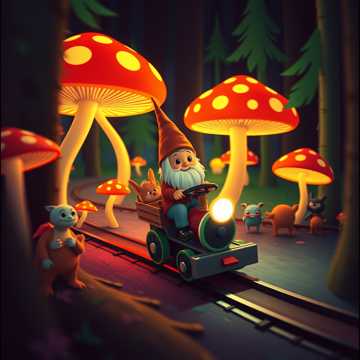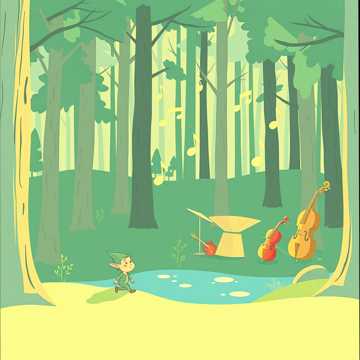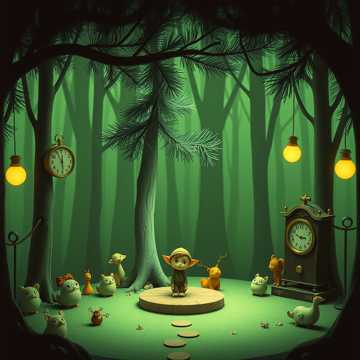
Free Hungarian Music Generator Powered by AI
Turn text into high-quality Hungarian music effortlessly – no login required!
music.toolTips

Alkonyi éden
Egy melankolikus, mégis felemelő rockballada az elmúlásról, szerelemről és égi fényekről, ahol a csend és a szél alkonyi édenkertet fest a lélek köré.
03:08
19 minutes ago

Sylvveszter Rádaysok 3
An energetic, upbeat anthem for New Year's Eve, mixing fun, festive lyrics with a fast K-pop style. The song captures the joy of celebrating the end of the year and embracing new beginnings.
01:40
5 hours ago

Sylvveszter Rádaysok
Egy pörgős, funky hangulatú újévi buli-dal, amely italokkal, jókajákkal és felszabadult vidámsággal ünnepli az Ó Év búcsúját és az Új Év érkezését.
01:45
5 hours ago

nincs visszaút
A dal a kitartás, önhitel és megállíthatatlan előrehaladás himnusza, amelyben a kudarc erővé, az út pedig bizonyítékká válik.
03:15
6 hours ago

nincs visszaút
Erőteljes, kitartásról és önteremtésről szóló himnusz, amely a félelmek legyőzését és a visszaút nélküli előretörést ünnepli.
03:17
6 hours ago

Az utolsó akadály
A moody Hungarian pop ballad featuring intimate female vocals, warm piano, and subtle synth pads. The song builds emotionally through dynamic choruses and a cathartic bridge, highlighting vulnerability and emotional depth.
03:00
7 hours ago

Gyertyafény A Hóban
Intim, ünnepi hangulatú dal a közelség, a csend és a közös karácsonyi emlékek varázsáról, meleg indie-pop hangzással.
02:56
Invalid date

Pár Csepp Deci Bor
A reflective, emotionally charged song blending Hungarian pop-rock with alt-folk. It explores themes of sorrow, intoxication, and camaraderie, set against a backdrop of vibrant instrumentation and dynamic vocal harmonies.
04:18
8 hours ago

Pár Csőp Deci Bór
A high-energy mulatós-pop song celebrating the joy of drinking, dancing, and living in the moment, with vibrant accordion and catchy melodies that get the party started.
03:00
11 hours ago

Kupak Az Égben
A high-energy mulatós track celebrating the wild joy of drinking, dancing, and carefree moments in a lively Hungarian bar, blending traditional instruments with modern, upbeat vibes.
02:25
11 hours ago

Manóba!
Manóba! is a fast-paced, whimsical folk song about the emotional journey of a manó (a mythical creature). With playful lyrics exploring the difference between man and manó, it combines philosophical musings with vibrant melodies and quirky effects, all generated by Suno AI.
04:32
20 hours ago

Manóba!
Humoros, gyors tempójú dal egy manó és az emberlét közti identitás-harcáról, játékos rajzfilmhangokkal és erdei zajokkal.
02:50
20 hours ago

Manóba!
A playful, philosophical song that explores the existential musings of a sprite (manó) and the duality of being human. With a minimalist melody and energetic rhythm, it creates a whimsical, thought-provoking atmosphere.
03:00
1 days ago

Ráday Sylvveszter 7
A festive and energetic New Year anthem combining rap and pop, with Hungarian lyrics celebrating the transition from the old year to the new. Full of lively energy, it’s perfect for parties and ringing in the fresh start with joy and humor.
01:21
1 days ago

Távol
A dal a kimondatlan szerelem feszültségét, a tiltott vonzalom csendes, mégis mindent elsöprő érzelmi súlyát mutatja be modern R&B és emotrap hangulatban.
03:05
1 days ago

Ráday Sylvveszter 2
A vibrant and chaotic celebration of New Year’s Eve, blending Hungarian and English phrases to express joy, partying, and festive fun. The track features K-pop inspired harmonized vocals and playful lyrics encouraging a joyful farewell to the old year and a welcoming of the new.
01:05
1 days ago

Manóba!
A whimsical, fast-paced song about a 'manó' (elf) contemplating its identity, blending playful vocal contrasts and nature-inspired sounds. The song humorously questions human and elf nature, offering a lighthearted yet thoughtful perspective.
03:22
1 days ago

Manóba
A playful and humorous song about the philosophical musings of a manó (a mythical creature) who contemplates the boundaries between human and manó existence. With whimsical melodies and playful voices, the song explores identity and existential questions with a light-hearted tone.
03:02
1 days ago

Magány
Magány explores the depths of loneliness and emotional isolation, highlighted by minimalist dark-pop production. The song captures a sense of longing and quiet despair through haunting vocals and sparse instrumentation.
03:32
1 days ago

Szotyi Gang
'Szotyi Gang' is an upbeat, rock-inspired anthem celebrating gaming culture, with references to popular online games like Minecraft, Roblox, and Brawl Stars. The song emphasizes community, energy, and the thrill of victory, paired with a catchy rhythm and bold vocal delivery.
02:20
1 days ago
Introduction to Hungarian Music and its Origins
Hungarian music refers to the diverse range ofHungarian Music Content SEO musical traditions, styles, and genres originating from Hungary, a country known for its rich cultural heritage and history. The roots of Hungarian music date back to the early folk traditions, which were influenced by Magyar tribes and later integrated with Western European, Turkish, and Romani elements. Over centuries, Hungary’s geographical location in Central Europe allowed it to blend various influences, which led to the development of unique musical characteristics. Hungarian music evolved through the Classical period, with composers such as Franz Liszt and Béla Bartók, who brought international attention to the country's musical innovations, while also preserving and elevating Hungarian folk music traditions.
Sub-tags and Classifications within Hungarian Music
Folk Music
Hungarian folk music is deeply rooted in the country's rural traditions. It incorporates a wide range of vocal and instrumental forms, often characterized by distinctive rhythmic patterns and modal scales. Folk songs often tell stories about daily life, history, and legends. The use of instruments like the violin, flute, and cimbalom (a type of hammered dulHungarian Music Overviewcimer) is central to Hungarian folk music.
Classical Music
Hungarian classical music is known for its contributions to both symphonic and opera traditions. Key figures such as Franz Liszt and Zoltán Kodály brought global recognition to Hungarian classical music. Liszt, in particular, revolutionized the piano and composed numerous works that are staples of the classical repertoire. Kodály, alongside Béla Bartók, pioneered the study of Hungarian folk music, blending it into contemporary classical compositions.
Jazz
Hungarian jazz, while influenced by American jazz traditions, has a distinctive flavor, incorporating local scales, rhythms, and harmonic structures. Jazz musicians from Hungary often infuse their performances with elements of Hungarian folk music and classical influences, creating a unique sound that sets them apart in the global jazz scene.
Contemporary and Pop Music
Hungarian contemporary and pop music has evolved over the last few decades, with many artists gaining international recognition. While rooted in European pop culture, Hungarian artists often bring local musical traditions, lyrics, and stylings into the mainstream, creating a blend of local and global influences. Popular genres include indie rock, electro-pop, and alternative music.
Famous Hungarian Artists and Iconic Works
Franz Liszt
Franz Liszt was a Hungarian composer, pianist, and conductor, widely regarded as one of the greatest pianists of all time. His works include symphonic poems, piano concertos, and virtuosic solo piano pieces. Liszt's contributions to music include his innovations in piano technique and the establishment of the symphonic poem as a genre.
Hungarian Rhapsody No. 2 by Franz Liszt
Hungarian Rhapsody No. 2 is one of Franz Liszt's most famous works. This piano piece is known for its virtuosic difficulty, dramatic contrasts, and incorporation of Hungarian folk dance rhythms. It blends fast-paced sections with lyrical, melancholic melodies, capturing the essence of Hungarian national identity.
Béla Bartók
Béla Bartók was a Hungarian composer and ethnomusicologist. He is known for his deep connection to Hungarian folk music, which he collected and transcribed during his life. His works such as 'Concerto for Orchestra' and 'Six String Quartets' are celebrated for their complexity, rhythmic innovation, and incorporation of folk elements.
Concerto for Orchestra by Béla Bartók
Béla Bartók’s Concerto for Orchestra is a masterpiece of 20th-century classical music. The work showcases his deep understanding of folk music, with its innovative use of orchestral color, rhythms, and textures. The composition is celebrated for its dramatic scope and the integration of Hungarian musical traditions within a modern, symphonic framework.
Zoltán Kodály
Zoltán Kodály was a Hungarian composer and educator. He was instrumental in developing a Hungarian national style and is best known for his choral and orchestral works, as well as his pedagogical methods, which have had a lasting influence on music education worldwide.
Sonata for Solo Cello by Zoltán Kodály
Zoltán Kodály's Sonata for Solo Cello is a profound exploration of the cello’s capabilities, blending technical virtuosity with a deep connection to Hungarian folk music. The work is celebrated for its thematic development and the way it highlights the rich tone of the cello while incorporating elements of Hungarian musical heritage.
György Ligeti
György Ligeti was a Hungarian-Austrian composer, famous for his contributions to contemporary classical music. His works, including 'Atmosphères' and 'Lux Aeterna,' have been influential in the field of avant-garde music, particularly in the use of micropolyphony and complex textures.
Applications of Hungarian Music in Various Scenarios
Hungarian music has been used in many film soundtracks, where the rich textures of Hungarian folk music or the dramatic works of Hungarian composers are ideal for creating an evocative atmosphere. For example, the music of Béla Bartók has been featured in several films, adding emotional depth and cultural significance.
Film Soundtracks
In advertising, Hungarian music, particularly the energetic rhythms of Hungarian folk or contemporary pop, has been used to evoke a sense of culture, passion, and authenticity. The powerful and distinctive sounds of Hungarian composers often align well with brand campaigns aiming to create a memorable and emotional connection with audiences.
Advertising Music
Hungarian music, especially its folk and classical traditions, has found a place in video game soundtracks. The rich textures of Hungarian music can add a sense of historical depth or cultural immersion, especially in games set in Central Europe or that require an epic, orchestral score.
Video Games
Hungarian composers, such as Liszt and Bartók, are frequently featured in concert performances worldwide. Their works are staples of the classical concert repertoire, with orchestras and soloists regularly performing their symphonic and chamber works, bringing Hungarian culture to global stages.
Concert Performances